EXTENDED PLAY - May 2010
More an enhancement than a replication of Quebec’s Festival International de Musique Actuelle de Victoriaville (FIMAV), Toronto’s VTO2010 festival cherry picks some of FIMAV’s international performers, presenting them with invited Canadian musicians. As these CDs indicate, the improvisers are impressive no matter the location or formation.
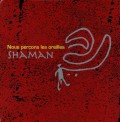 One of the most anticipated concerts is the Six at the Music Gallery May 26. An all-star European ensemble, one of its distinguishing characteristic is the supportive synthesizer work of Köln’s Thomas Lehn. Close Up (MonotypeRec. mono024 www.monotyperec.com) demonstrates Lehn’s skills providing the underpinning for Bertrand Gauguet, a technically adroit French saxophonist, plus Viennese quarter-tone trumpeter Franz Hautzinger. As with the Six, electronics are part of this trio’s mix. So on Close Up’s three extended tracks blurry intonation encompasses loops of granulated tones mixed with rumbles and pulses from Lehn, air burbled through the body tube of Gauguet’s saxophones and tremolo buzzing from Hautzinger. Building up in sonic fervor through the intersection of synthesizer pitch shifting, distortion and flanging plus wide-bore whizzes and echoing patterns from the acoustic instruments, the CD climaxes with the over 26-minute Close Up 03. Cricket-like reed chirps and hand-muted brass vibrations are put aside for spectral processing which adds the affiliated extensions of most timbres as they sweep by staccato or glissandi. While the electronics’ wave forms undulate symmetrically, they also output enough percussive drones to subsume technical flaunting. The trumpeter’s braying bell-like reverb and the saxophonist’s feral animal-like squeals consequently meld with thumping synthesizer pedal-point expressions for a satisfying finale.
One of the most anticipated concerts is the Six at the Music Gallery May 26. An all-star European ensemble, one of its distinguishing characteristic is the supportive synthesizer work of Köln’s Thomas Lehn. Close Up (MonotypeRec. mono024 www.monotyperec.com) demonstrates Lehn’s skills providing the underpinning for Bertrand Gauguet, a technically adroit French saxophonist, plus Viennese quarter-tone trumpeter Franz Hautzinger. As with the Six, electronics are part of this trio’s mix. So on Close Up’s three extended tracks blurry intonation encompasses loops of granulated tones mixed with rumbles and pulses from Lehn, air burbled through the body tube of Gauguet’s saxophones and tremolo buzzing from Hautzinger. Building up in sonic fervor through the intersection of synthesizer pitch shifting, distortion and flanging plus wide-bore whizzes and echoing patterns from the acoustic instruments, the CD climaxes with the over 26-minute Close Up 03. Cricket-like reed chirps and hand-muted brass vibrations are put aside for spectral processing which adds the affiliated extensions of most timbres as they sweep by staccato or glissandi. While the electronics’ wave forms undulate symmetrically, they also output enough percussive drones to subsume technical flaunting. The trumpeter’s braying bell-like reverb and the saxophonist’s feral animal-like squeals consequently meld with thumping synthesizer pedal-point expressions for a satisfying finale.
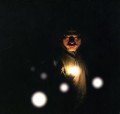 Colin McLean’s computer processing is also prominent on Everything but the Beginning (Unsounds U17 www.unsounds.com). But so is the prowess of British guitarist Andy Moor, a member of the EX. In Toronto his Music Gallery performance – also on May 26 – is as part of a long-standing duo with French poetess Anne-James Chatton. On this CD, his technical command of the six-string is showcased with McLean’s hardware usually confined to patched rumbles and processed burbles and rebounds. Moor often uses the laptop undercurrent as a click track, linearly exposing single-string snaps, rough twangs or chuffed reverberations. His improvising can be playfully decorative, as when he seconds the sample of a squeak toy on Delta Block. In contrast on The Flower of fixed idea it appears that piezo pickups multiply his twangs so that the theme is pulsed, pushed and twisted into voltage-shaking signals.
Colin McLean’s computer processing is also prominent on Everything but the Beginning (Unsounds U17 www.unsounds.com). But so is the prowess of British guitarist Andy Moor, a member of the EX. In Toronto his Music Gallery performance – also on May 26 – is as part of a long-standing duo with French poetess Anne-James Chatton. On this CD, his technical command of the six-string is showcased with McLean’s hardware usually confined to patched rumbles and processed burbles and rebounds. Moor often uses the laptop undercurrent as a click track, linearly exposing single-string snaps, rough twangs or chuffed reverberations. His improvising can be playfully decorative, as when he seconds the sample of a squeak toy on Delta Block. In contrast on The Flower of fixed idea it appears that piezo pickups multiply his twangs so that the theme is pulsed, pushed and twisted into voltage-shaking signals.
 Acoustic interaction is also featured on May 19, with the Dans Les Arbes quartet at the Music Gallery. Consisting of one French and three Norwegian musicians, it offers the same sort of extrasensory perception its percussionist Ingar Zach brings to Mural Nectars of Emergence (SOFA Records 528 www.sofamusic.no). Interestingly enough Zach’s “Mural”-mates, Australian flautist/saxophonist Jim Denley and guitarist Kim Myhr, are at FIMAV in a different configuration. Minimalist and atmospheric, the CD’s seven tracks are built up from pointillist dabs of sonic colors, soaking together without abrasion. That doesn’t mean the performance is modest, just unshowy. Zach for instance use wood pops, bowl scrapes, chiming bells and drum-skin rubs to make his points. Meantime Myhr’s guitar preparations allow him to produce hefty church-organ-like chords in some instances, loops of electrified signal-processed clangs elsewhere and constant harsh strumming. Throughout Denley’s masticated split tones propel his saxophone pitches to the patchy edge of hearing with strident wolf whistles, tongue slaps and subterranean growls, while there’s nothing delicate about his buzzing flute expositions. Flash Expansion is particularly noteworthy. With Myhr’s rhythmic rasgueado meeting up with amplified drum-top rubs and harsh reed reflux, the processed loops bring the narrative in-and-out-of-focus, with the sound menacing and motor-driven one minute, the next as weightless as waves lapping against the sea shore.
Acoustic interaction is also featured on May 19, with the Dans Les Arbes quartet at the Music Gallery. Consisting of one French and three Norwegian musicians, it offers the same sort of extrasensory perception its percussionist Ingar Zach brings to Mural Nectars of Emergence (SOFA Records 528 www.sofamusic.no). Interestingly enough Zach’s “Mural”-mates, Australian flautist/saxophonist Jim Denley and guitarist Kim Myhr, are at FIMAV in a different configuration. Minimalist and atmospheric, the CD’s seven tracks are built up from pointillist dabs of sonic colors, soaking together without abrasion. That doesn’t mean the performance is modest, just unshowy. Zach for instance use wood pops, bowl scrapes, chiming bells and drum-skin rubs to make his points. Meantime Myhr’s guitar preparations allow him to produce hefty church-organ-like chords in some instances, loops of electrified signal-processed clangs elsewhere and constant harsh strumming. Throughout Denley’s masticated split tones propel his saxophone pitches to the patchy edge of hearing with strident wolf whistles, tongue slaps and subterranean growls, while there’s nothing delicate about his buzzing flute expositions. Flash Expansion is particularly noteworthy. With Myhr’s rhythmic rasgueado meeting up with amplified drum-top rubs and harsh reed reflux, the processed loops bring the narrative in-and-out-of-focus, with the sound menacing and motor-driven one minute, the next as weightless as waves lapping against the sea shore.
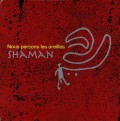 A weightier Canadian balance to the international sounds is the exclusive-to-VTO triple bill at the Tranzac club May 14. The Rent and Hat + Beard are locals, while Shaman from Montreal is also on hand. Consisting of Jean Derome and Joane Hétu on woodwinds, voices and objects Nous perçons les oreilles (Ambiances Magnétiques AM 200 CD www.actuellecd.com) exposes Shaman’s strategy of D-I-Y ethnomusicology. Like ancient tribal healers the duo expresses itself through verbal screams, squeaks, murmurs, mumbles and cries as well as inchoate instrumental textures. The two recount 12 short narratives which are as much Dada as primitive, wrapped in onomatopoeia that bonds mouth expressions such as cheers, yelps and gurgles with slide-whistle peeps, unsequenced altissimo saxophone stridency, key percussion, clipping chromatic timbres and reverberating body tube echoes.
A weightier Canadian balance to the international sounds is the exclusive-to-VTO triple bill at the Tranzac club May 14. The Rent and Hat + Beard are locals, while Shaman from Montreal is also on hand. Consisting of Jean Derome and Joane Hétu on woodwinds, voices and objects Nous perçons les oreilles (Ambiances Magnétiques AM 200 CD www.actuellecd.com) exposes Shaman’s strategy of D-I-Y ethnomusicology. Like ancient tribal healers the duo expresses itself through verbal screams, squeaks, murmurs, mumbles and cries as well as inchoate instrumental textures. The two recount 12 short narratives which are as much Dada as primitive, wrapped in onomatopoeia that bonds mouth expressions such as cheers, yelps and gurgles with slide-whistle peeps, unsequenced altissimo saxophone stridency, key percussion, clipping chromatic timbres and reverberating body tube echoes.


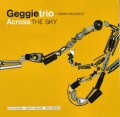
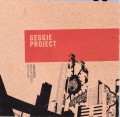
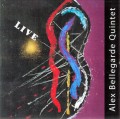
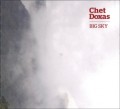
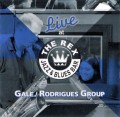
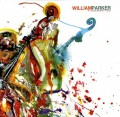

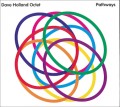
 Rimouski, Quebec-based bassist/audio artist Éric Normand, who performs at Somewhere There this month, allows listeners to download sounds from his website www.tourdebras.com. One example of this is Une Règle de Trois (Tour de Bras tdbouebe002). A hand-drawn CD cover can be downloaded as well. Recorded live, this is a super-session of sorts featuring collaborations among improvisers from Rimouski, Montreal and Montpellier, France. Most of the sounds balance on steady crunches and crackles from three turntablists, with wiggling flanges and flying spiccato reprises from fiddler Catherine Massicotte and guitarist Christophe Devaux, plus puffs and bellows from Robin Servant’s diatonic accordion. Normand adds aleatoric and agitato smacks bringing the discursive theme in-and-out of aural focus, as the motor-driven clicks and clatters create a pedal point foundation.
Rimouski, Quebec-based bassist/audio artist Éric Normand, who performs at Somewhere There this month, allows listeners to download sounds from his website www.tourdebras.com. One example of this is Une Règle de Trois (Tour de Bras tdbouebe002). A hand-drawn CD cover can be downloaded as well. Recorded live, this is a super-session of sorts featuring collaborations among improvisers from Rimouski, Montreal and Montpellier, France. Most of the sounds balance on steady crunches and crackles from three turntablists, with wiggling flanges and flying spiccato reprises from fiddler Catherine Massicotte and guitarist Christophe Devaux, plus puffs and bellows from Robin Servant’s diatonic accordion. Normand adds aleatoric and agitato smacks bringing the discursive theme in-and-out of aural focus, as the motor-driven clicks and clatters create a pedal point foundation. A more sophisticated version of downloadable CDs comes from the French Sans Bruit label. Featuring improvisers pianist Noah Rosen, trombonist Yves Robert and bassist Didier Levallet, Silhouette (Sans Bruit sbr007 www.sansbruit.fr) not only captures the trio live, but also provides a professionally designed front and back cover with recording details. Rosen and his confreres’ disc is as swinging as it is kinetic, highlighting an impressive admixture of timbres, not least of which includes modern gutbucket styling from trombonist Robert. Super staccato, Aesthetic Form for instance is less aesthetic than acrobatic, as Robert’s rubato whinnies slink and sway alongside Rosen’s two-handed pump in the piano’s lowest register, until he slips to the edge of the keys to link up with Levallet’s sul tasto runs. Elsewhere Rosen’s hunt-and-peck technique predominates, along with the trombonist’s triple-tonguing and mouth gymnastics. The session culminates with Bon, bref et puis… with allegro additions from each partner expressed in slaps and pumps from the bassist, cascading comping from the pianist plus foreshortened and jagged bass-pitched slurs from Robert.
A more sophisticated version of downloadable CDs comes from the French Sans Bruit label. Featuring improvisers pianist Noah Rosen, trombonist Yves Robert and bassist Didier Levallet, Silhouette (Sans Bruit sbr007 www.sansbruit.fr) not only captures the trio live, but also provides a professionally designed front and back cover with recording details. Rosen and his confreres’ disc is as swinging as it is kinetic, highlighting an impressive admixture of timbres, not least of which includes modern gutbucket styling from trombonist Robert. Super staccato, Aesthetic Form for instance is less aesthetic than acrobatic, as Robert’s rubato whinnies slink and sway alongside Rosen’s two-handed pump in the piano’s lowest register, until he slips to the edge of the keys to link up with Levallet’s sul tasto runs. Elsewhere Rosen’s hunt-and-peck technique predominates, along with the trombonist’s triple-tonguing and mouth gymnastics. The session culminates with Bon, bref et puis… with allegro additions from each partner expressed in slaps and pumps from the bassist, cascading comping from the pianist plus foreshortened and jagged bass-pitched slurs from Robert. A more cerebral trombone trio is on Meshes (Another Timbre Byways at-b05 www.anothertimbre.com). This CD-R, with its well-designed cover, demonstrates another method of distribution. Certain that young improvisers wouldn’t need the number of discs in a standard official CD run, the British label created its Byways CD-R series. Certainly this gritty and pressured microtonal program from trombonist Mathias Forge, electronics manipulator Phil Julian and cellist David Papapostolou is one justification for the experiment. During two lengthy improvisations, the interaction and texture-blending is such that it’s frequently impossible to match particular timbres to individual instruments. With Julian’s electronics segmenting into chunky signal- processed lines, pulsating reverb and flat-line drones, multiplied shrills flash through the narratives like rain showers, when the static isn’t undulating underneath. Extended passages of extreme stillness also alter the tonal centre so that whistling squeaks from the cello – often hewn from the strings below the bridge – or blurry triplets strained from the trombone bell, tongue pops and flat-line blowing without valve pushes are more conspicuous. Although discontinuous in spots, the combined undulations made up of cello strings held to maximum tautness, rubato grace notes plus tremolo pedal tones from the trombonist, and electronic drones eventually reach a crescendo of inter-connected friction climaxing with a conclusive whistle and pop.
A more cerebral trombone trio is on Meshes (Another Timbre Byways at-b05 www.anothertimbre.com). This CD-R, with its well-designed cover, demonstrates another method of distribution. Certain that young improvisers wouldn’t need the number of discs in a standard official CD run, the British label created its Byways CD-R series. Certainly this gritty and pressured microtonal program from trombonist Mathias Forge, electronics manipulator Phil Julian and cellist David Papapostolou is one justification for the experiment. During two lengthy improvisations, the interaction and texture-blending is such that it’s frequently impossible to match particular timbres to individual instruments. With Julian’s electronics segmenting into chunky signal- processed lines, pulsating reverb and flat-line drones, multiplied shrills flash through the narratives like rain showers, when the static isn’t undulating underneath. Extended passages of extreme stillness also alter the tonal centre so that whistling squeaks from the cello – often hewn from the strings below the bridge – or blurry triplets strained from the trombone bell, tongue pops and flat-line blowing without valve pushes are more conspicuous. Although discontinuous in spots, the combined undulations made up of cello strings held to maximum tautness, rubato grace notes plus tremolo pedal tones from the trombonist, and electronic drones eventually reach a crescendo of inter-connected friction climaxing with a conclusive whistle and pop.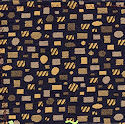 Brass and an electronic variant are also prominent on All Up In There (MrE Records 2 www.myspace.com/gordonallen) by Montreal-based, former Torontonian, trumpeter Gordon Allen, who often plays here. Figuring this concert with Frank Martel on theremin and drummer Michel F. Côté was worth preserving, Allen initially created 79 copies of the disc. With liner notes handwritten on a paper bag and the record packaged in a hand-sewn cloth bag, D-I-Y is taken to its logical extreme. But the strength of the performance suggests that more copies may eventually be needed. Sounds are cohesive and wedded to jazz-improv. Although when all musical cylinders fire at once the results appear as a solid textural block, there’s ample room for individual expression. Revealed are Côté’s anything-but-regular rhythms, the trumpeter’s choked-throat growls, and pitter-pattering string-referencing thumps from the theremin. These bass-like strokes are even more prominent midway through, when joining the drummer’s assertive backbeat, they create a solid base, allowing Allen’s plunger tones, grace note squeaks and bovine lows to float above.
Brass and an electronic variant are also prominent on All Up In There (MrE Records 2 www.myspace.com/gordonallen) by Montreal-based, former Torontonian, trumpeter Gordon Allen, who often plays here. Figuring this concert with Frank Martel on theremin and drummer Michel F. Côté was worth preserving, Allen initially created 79 copies of the disc. With liner notes handwritten on a paper bag and the record packaged in a hand-sewn cloth bag, D-I-Y is taken to its logical extreme. But the strength of the performance suggests that more copies may eventually be needed. Sounds are cohesive and wedded to jazz-improv. Although when all musical cylinders fire at once the results appear as a solid textural block, there’s ample room for individual expression. Revealed are Côté’s anything-but-regular rhythms, the trumpeter’s choked-throat growls, and pitter-pattering string-referencing thumps from the theremin. These bass-like strokes are even more prominent midway through, when joining the drummer’s assertive backbeat, they create a solid base, allowing Allen’s plunger tones, grace note squeaks and bovine lows to float above.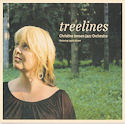 Canada owes Nanaimo, B.C. for raising artists like Diana Krall and the Jensen Sisters for its national jazz team, a thought underscored by Christine Jensen’s newest recording, Treelines - Christine Jensen Jazz Orchestra (Justin Time JTR 8559-2 www.justin-time.com). The leader, known more for her composing than sax playing, has been based in Montreal for some time and here recruits a top-flight 17-piece Quebecois band for her fourth recording as leader and first with orchestra. Within seconds of the opening tune of eight lengthy, thoughtful and stunningly-stylish compositions (Dancing Sunlight) you’re thinking here’s the nation’s answer to America’s vaunted Maria Schneider unit – and when Ingrid Jensen’s dreamy, lyrical trumpet solos starts you might well exclaim “it’s Kenny Wheeler”. In short, this is an astoundingly good album, one that surely will be a 2011 Juno contender, with seven Jensen tracks including four describing B.C. tree types. Charts are often striking, section work is sharp, subtlety abounds in the thick harmonies and there’s acres of room for effective soloing – Joel Miller on soprano sax (Western Yew), Ingrid (Dropoff) and the boss herself on Seafever and by pianist Steve Amirault throughout. Curmudgeons might sneer that there’s excessive sameness to these mini-epics - ignore them.
Canada owes Nanaimo, B.C. for raising artists like Diana Krall and the Jensen Sisters for its national jazz team, a thought underscored by Christine Jensen’s newest recording, Treelines - Christine Jensen Jazz Orchestra (Justin Time JTR 8559-2 www.justin-time.com). The leader, known more for her composing than sax playing, has been based in Montreal for some time and here recruits a top-flight 17-piece Quebecois band for her fourth recording as leader and first with orchestra. Within seconds of the opening tune of eight lengthy, thoughtful and stunningly-stylish compositions (Dancing Sunlight) you’re thinking here’s the nation’s answer to America’s vaunted Maria Schneider unit – and when Ingrid Jensen’s dreamy, lyrical trumpet solos starts you might well exclaim “it’s Kenny Wheeler”. In short, this is an astoundingly good album, one that surely will be a 2011 Juno contender, with seven Jensen tracks including four describing B.C. tree types. Charts are often striking, section work is sharp, subtlety abounds in the thick harmonies and there’s acres of room for effective soloing – Joel Miller on soprano sax (Western Yew), Ingrid (Dropoff) and the boss herself on Seafever and by pianist Steve Amirault throughout. Curmudgeons might sneer that there’s excessive sameness to these mini-epics - ignore them.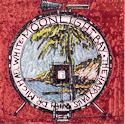 Want to keep the post-Olympic spirit? The latest disc from The Happy Pals who’ve reigned for years at Grossman’s on Spadina every Saturday afternoon, is all you need. Folk are in fine fettle here, band and audience both, enjoying music played over the 6th annual two-day Kid Bastien Forever Kick-Ass Jazz Festival – Bastien, who died in 2003, was chief Pal for more than 30 years. Moonlight Bay (New Orleans North cd-010 www.happypals.ca) has 14 tracks, good old stuff with most of the heavy performance listing falling to Patrick Tevlin’s brash trumpet and esteemed New Orleans guest Michael White’s thrusting clarinet, with big assists coming from trombonist Kid Kotowich and drummer Chuck Clarke. Enthusiastic, erratic vocals are spread around but the jollity index stays high, with upbeat slams on Je Vous Aime, Everybody Loves Saturday Night and Dinah while there’s surprising sophistication in their spin on I’ll Never Smile Again.
Want to keep the post-Olympic spirit? The latest disc from The Happy Pals who’ve reigned for years at Grossman’s on Spadina every Saturday afternoon, is all you need. Folk are in fine fettle here, band and audience both, enjoying music played over the 6th annual two-day Kid Bastien Forever Kick-Ass Jazz Festival – Bastien, who died in 2003, was chief Pal for more than 30 years. Moonlight Bay (New Orleans North cd-010 www.happypals.ca) has 14 tracks, good old stuff with most of the heavy performance listing falling to Patrick Tevlin’s brash trumpet and esteemed New Orleans guest Michael White’s thrusting clarinet, with big assists coming from trombonist Kid Kotowich and drummer Chuck Clarke. Enthusiastic, erratic vocals are spread around but the jollity index stays high, with upbeat slams on Je Vous Aime, Everybody Loves Saturday Night and Dinah while there’s surprising sophistication in their spin on I’ll Never Smile Again.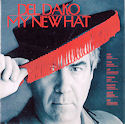 Four things make Del Dako’s My New Hat (www.deldako.com) particularly distinctive: It’s the recording debut as leader of vibesman Dako as opposed to baritone saxist star Dako; the liner notes by Jack Chambers are just about the best I’ve ever read; the determination of Dako to renew his career here is front and centre; and the choice of repertoire is extraordinary – such as the purloining of Beethoven’s 7th Theme from the Seventh Symphony and the two versions of avant pianoman Don Pullen’s Big Alice which suggest Ornette Coleman is on board. Perhaps it’s best just to say this is fascinating jazz with a vibes sheen that underlines the uniqueness of it all. The music’s drawn from two sessions, both with drummer Jeff Halischuk, one with guitarist Reg Schwager, pianist Bernie Senensky and bass Duncan Hopkins, the other with rising star guitarist Nathan Hiltz, bass Tyler Emond and reedman Alex Dean, whose bass clarinet work is terrific.
Four things make Del Dako’s My New Hat (www.deldako.com) particularly distinctive: It’s the recording debut as leader of vibesman Dako as opposed to baritone saxist star Dako; the liner notes by Jack Chambers are just about the best I’ve ever read; the determination of Dako to renew his career here is front and centre; and the choice of repertoire is extraordinary – such as the purloining of Beethoven’s 7th Theme from the Seventh Symphony and the two versions of avant pianoman Don Pullen’s Big Alice which suggest Ornette Coleman is on board. Perhaps it’s best just to say this is fascinating jazz with a vibes sheen that underlines the uniqueness of it all. The music’s drawn from two sessions, both with drummer Jeff Halischuk, one with guitarist Reg Schwager, pianist Bernie Senensky and bass Duncan Hopkins, the other with rising star guitarist Nathan Hiltz, bass Tyler Emond and reedman Alex Dean, whose bass clarinet work is terrific.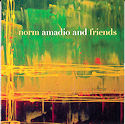 Pianist Norm Amadio has been around for ever, still happily tinkling after more than six decades as a pro and that’s just one reason why he’s so comfortable on Norm Amadio And Friends (Panda Digital ODCD00265 www.pandadigital.com), a classy, stylish treatment of a dozen songs (remarkably, seven of them originals by producer Andrew Melzer). As well as vocalists Marc Jordan and Jackie Richardson, Amadio’s buddies include elegant-as-ever Guido Basso, Phil Dwyer, Reg Schwager, and Rosemary Galloway plus, on three cuts, a string section. The result is top quality jazz, ornamented with unexpected zesty freshness. Catchy newcomers include I Love You That Way, Out Of The Cool and She Smiled. One oddity: Why was it necessary to include three tunes recorded in 1966?
Pianist Norm Amadio has been around for ever, still happily tinkling after more than six decades as a pro and that’s just one reason why he’s so comfortable on Norm Amadio And Friends (Panda Digital ODCD00265 www.pandadigital.com), a classy, stylish treatment of a dozen songs (remarkably, seven of them originals by producer Andrew Melzer). As well as vocalists Marc Jordan and Jackie Richardson, Amadio’s buddies include elegant-as-ever Guido Basso, Phil Dwyer, Reg Schwager, and Rosemary Galloway plus, on three cuts, a string section. The result is top quality jazz, ornamented with unexpected zesty freshness. Catchy newcomers include I Love You That Way, Out Of The Cool and She Smiled. One oddity: Why was it necessary to include three tunes recorded in 1966?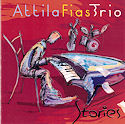 Hungarian-born pianist Attila Fias seems to have done it all during a long musical career - including playing, teaching and organizing all types of music – except make a jazz record though his work is on more than 80 discs. He’s remedied that with Stories (ESPCD-101 www.attilafias.com), 10 original compositions supported by bass Pat Kilbride and drummer Richard Brisco. A graduate of U of T’s jazz program, Fias – who on occasion is as fiery as countryman Robi Botos – hews close to mainstream’s core but he incorporates rich, rolling rhythms, elements of rock, country, classical and ethnic genres and sometimes dips craftily into free jazz. The intricate Growth Cycle threesome is the best of a bright lot.
Hungarian-born pianist Attila Fias seems to have done it all during a long musical career - including playing, teaching and organizing all types of music – except make a jazz record though his work is on more than 80 discs. He’s remedied that with Stories (ESPCD-101 www.attilafias.com), 10 original compositions supported by bass Pat Kilbride and drummer Richard Brisco. A graduate of U of T’s jazz program, Fias – who on occasion is as fiery as countryman Robi Botos – hews close to mainstream’s core but he incorporates rich, rolling rhythms, elements of rock, country, classical and ethnic genres and sometimes dips craftily into free jazz. The intricate Growth Cycle threesome is the best of a bright lot.